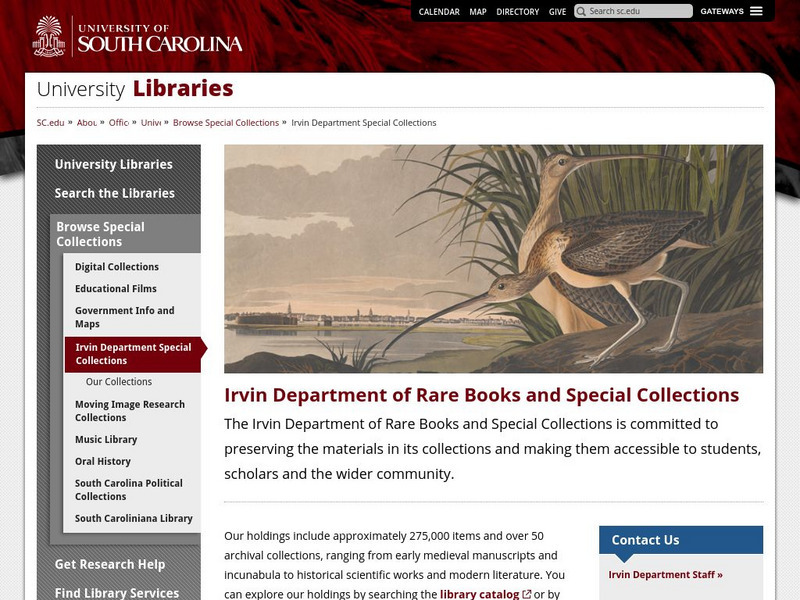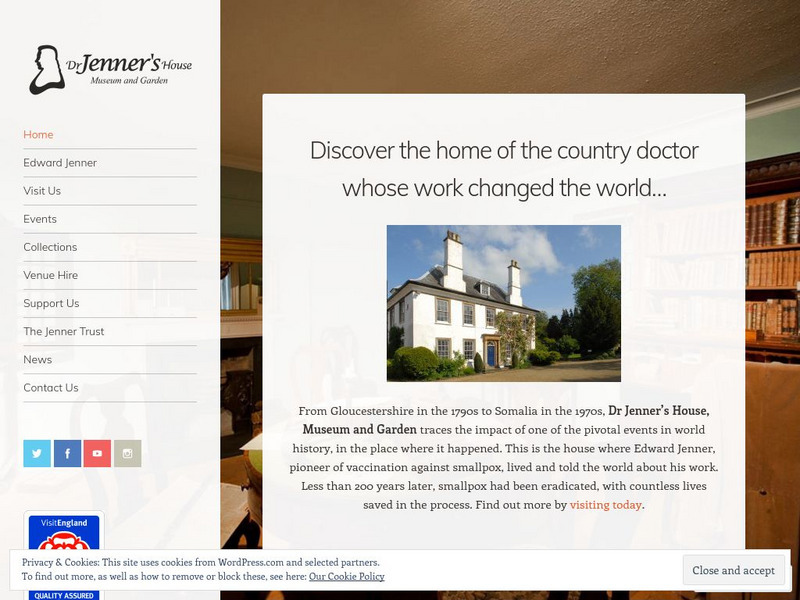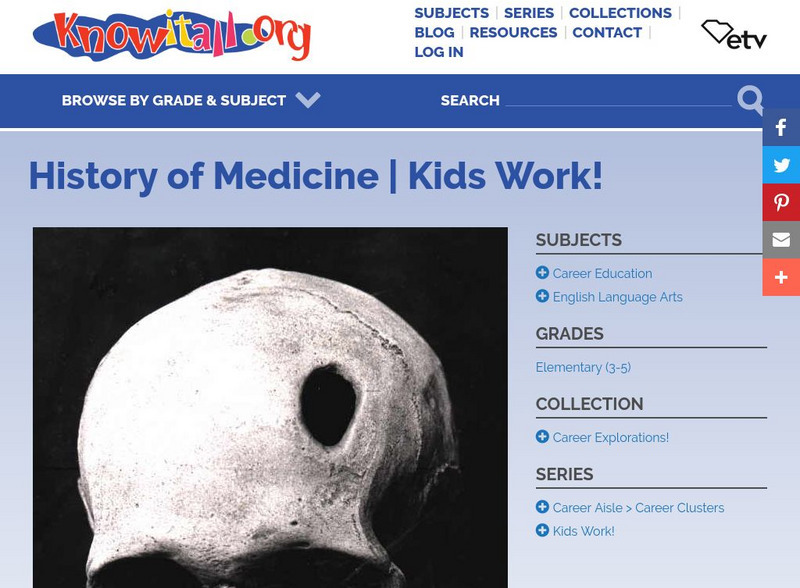Curated OER
Edward Jenner
Here is an interesting lesson that tells the story of Edward Jenner, who came up with an immunization for smallpox. After watching a video that describes him, learners use an outline of a man to draw his picture and write down some facts...
Internet History Sourcebooks Project
Fordham University: Modern History Sourcebook: Edward Jenner (1749 1823)
This site from the Modern History Sourcebook of the Fordham University provides a highly detailed biography of Edward Jenner (1749-1823 CE), noted physician and discoverer of the smallpox vaccine. Also presented are three original...
Smithsonian Institution
National Museum of American History: History of Vaccines
Illustrated overview of the history of vaccines and inoculations against diseases, such as smallpox and polio.
TED Talks
Ted: Ted Ed: How Do Vaccines Work?
The first ever vaccine was created when Edward Jenner, an English physician and scientist, successfully injected small amounts of a cowpox virus into a young boy to protect him from the related (and deadly) smallpox virus. But how does...
TED Talks
Ted: Ted Ed: How We Conquered the Deadly Smallpox Virus
For 10,000 years, humanity suffered from the scourge of smallpox. The virus killed almost a third of its victims within two weeks and left survivors horribly scarred. But Simona Zompi commends the brave souls- a Buddhist nun, a boy, a...
Other
Edward Jenner and the Discovery of Vaccination
A site with a brief biography of Edward Jenner, with a lot of links to old books and papers of his that document his experiments in vaccinations.
Other
The Edward Jenner Museum: Edward Jenner
A very complete biography of Edward Jenner, from his birth to his death. Includes pictures and discusses his discovery of vaccination.
Famous Scientists
Famous Scientists: Edward Jenner
Learn about the english physician and scientist who was the pioneer of smallpox vaccine, the first vaccination.
South Carolina Educational Television
Etv: Kids Work! History of Medicine
A brief history of medicine told in five snapshots of time: ancient times, the Middle Ages, the Renaissance, the early modern period (eighteenth and nineteenth centuries), and modern times.
Read Works
Read Works: Saving the World From Smallpox
[Free Registration/Login Required] An informational text about smallpox and Dr. Edward Jenner's first observations about preventing the disease. A question sheet is available to help students build skills in reading comprehension.
Other
Maryland Department of Health & Mental Hygiene: Smallpox [Pdf]
Talks about what smallpox is, how it was treated before a vaccine came out, and talks about Edward Jenner and his association with smallpox. PDF file
Curated OER
Educational Technology Clearinghouse: Clip Art Etc: Edward Jenner
Edward Jenner was an English country doctor who studied nature and his natural surroundings since his childhood and practiced medicine in Berkeley. He is famous for his discovery of the smallpox vaccine.
Curated OER
Smithsonian Libraries: Scientific Identity: Edward Jenner (1749 1823)
A portrait of Edward Jenner from the Dibner Library of the History of Science and Technology, made available through the Smithsonian Institution's Scientific Identity Collection.
Curated OER
Smithsonian Libraries: Scientific Identity: Edward Jenner (1749 1823)
A portrait of Edward Jenner from the Dibner Library of the History of Science and Technology, made available through the Smithsonian Institution's Scientific Identity Collection.








